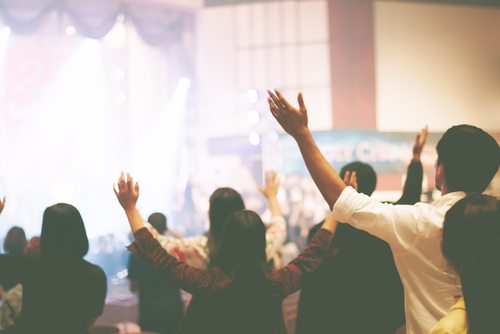Liturgy operates at a level that runs deeper than any words can contain. It is less of an informative learning experience and more of an imaginative soul-knowing.
Too often, we assume that more words will lead us to a better understanding, but liturgy is not just about the words used; it is about the ritual actions that accompany those words. This combination forms us in who we are.
The ritual actions define and shape us as a people who gather together around a shared memory, and who live from the Eucharistic table of Jesus Christ.
What is the Catholic Church’s tradition? What is the chain of memory we belong to? What is the sacred memory for which we are stewards?
The longest tradition we have record of is the ritual actions of the liturgy. From the writing of Justin Martyr in the 2nd century, we have an account of the actions of gathering, telling the stories, taking, blessing, breaking and sharing the bread and the wine and sending members to extend the actions shared with those who could not be present.
These actions do not require a specific language or specific words by which we would claim them. Jesus’ command was to DO this. And so, we DO the liturgy. We do not SAY the liturgy. We DO as Jesus did.
Our ritual action and our communal silent prayer combine to form our common language. The ritual action combined with communal silence are the way of DOING the liturgy that is spoken in any language and any country. It is a part of any age group and any culture. It is about gathering around a story, a table, a future. It is about listening beyond words. It’s about reverencing and remembering, acknowledging and sharing. It is about BEING the church, BEING the body of Christ in the world, and joining all people into communion with God.
Each parish community needs to find a way of doing the liturgy that releases them from the bondage of words, that brings the ritual action and silence to the forefront.
This means carefully preparing how we do what we do in the liturgy. It means rehearsing a consciousness with our gestures, movements, silences, and song. It means using these non-verbal languages to speak as one body.
Words are not sufficient. They are only one form of human expression among many. None alone, nor all combined, can capture the mystery of God. We simply try, in great humility, to form ourselves around a patterned way of responding to the call of divine love.
In this patterned communal behavior, we become a holiness, a largeness that reminds the world of Christ’s message and mission. Together, by our participation, we glorify God and participate in the ever-emerging sanctification of humanity.
It is important to always remember that the church does not exist only for the benefit of its own constituents. The church exists on behalf of the world, so that the world will not forget the goal of all of creation: to become the fullness of God.
This liturgical path we share carries us together towards the continual revelation of God’s truth. It is not a pathway of living certitudes but a pathway of ever emerging questions.
Being Catholic, living as the one body of Christ, is a journey towards truth, not certainty, and in Christ, truth is an action to be lived, not an answer to be claimed. Truth is living in God, and for God and with God.
In church, we are a people, not individual prayers who happen to be in the same building. Together, we form a body that speaks different languages, lives different lives, but comes together to “live and move and have our being” in Jesus Christ.
Our one voice is the voice of God who speaks in many different ways, but we all understand, beyond the sound of those words, the truth that voice speaks. Liturgy is less about words and more about actions. It’s about the many parts of humanity coming together as one body.
“Brothers and sisters: You are no longer strangers and sojourners, but you are fellow citizens with the holy ones and members of the household of God, built upon the foundation of the Apostles and prophets, with Christ Jesus himself as the capstone. Through him the whole structure is held together and grows into a temple sacred in the Lord; in him you also are being built together into a dwelling place of God in the Spirit.” (Ephesians 2:19-22)

